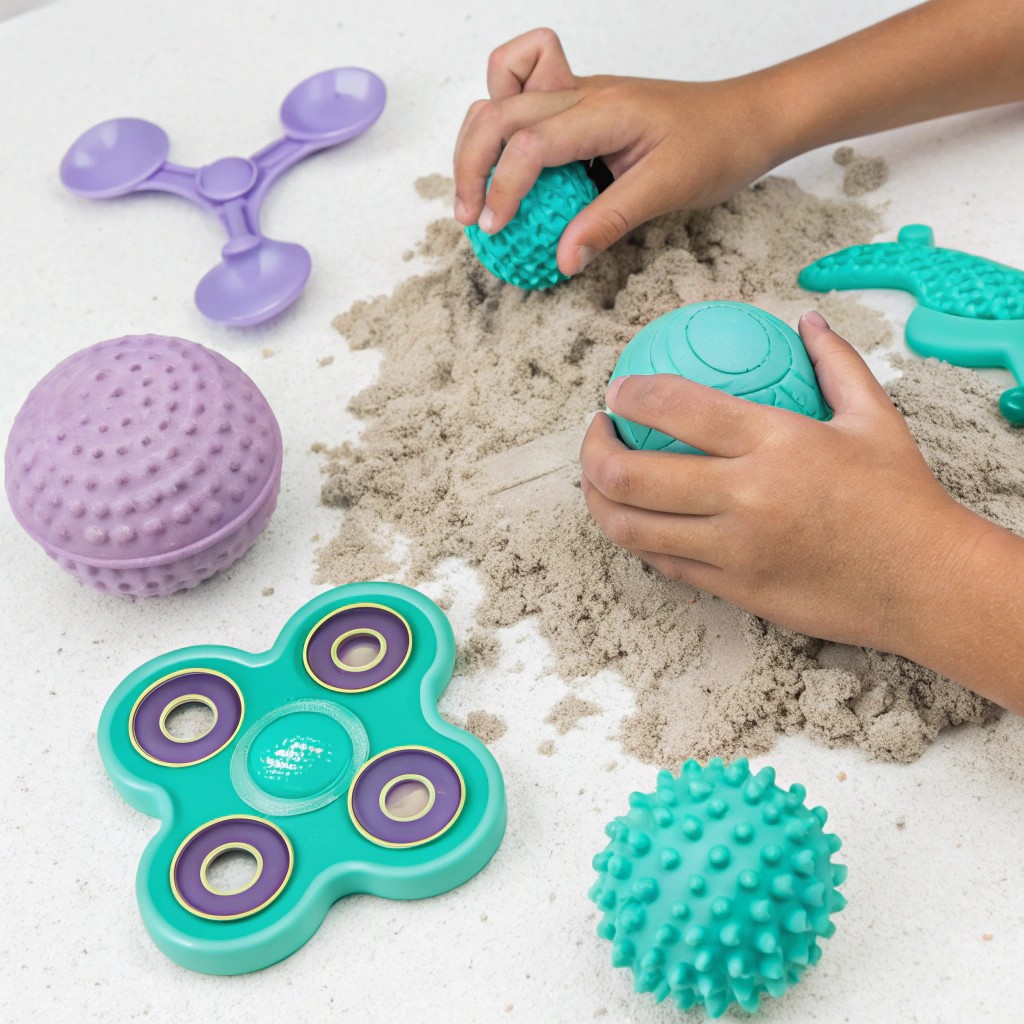The Power of Tactile Sensory Play for Stress Relief and Focus
In our digital world, where screens dominate our attention and virtual experiences replace physical ones, the importance of tactile sensory play has never been greater. The simple act of engaging with different textures and materials can have profound effects on our nervous system, emotional regulation, and cognitive function.
Understanding Tactile Sensory Processing
The tactile sense—our sense of touch—is the first sensory system to develop in the womb and plays a crucial role in how we interact with the world around us. Tactile processing involves:
- Discriminative touch: The ability to identify objects through touch and understand their properties
- Protective touch: The system that alerts us to potential danger through touch (temperature, pain, pressure)
- Social touch: The emotional and bonding aspects of touch that contribute to wellbeing
For many people, especially those with neurodivergent conditions like autism, ADHD, or sensory processing differences, the tactile system may be either hypersensitive (over-responsive) or hyposensitive (under-responsive). Tactile sensory play can help regulate this system, bringing it into better balance.
The Science Behind Tactile Play and Stress Relief
Research has shown that engaging in tactile sensory activities can:
- Reduce cortisol levels: Manipulating certain textures can lower stress hormones in the body
- Increase serotonin and dopamine: Pleasant tactile experiences can boost "feel-good" neurotransmitters
- Activate the parasympathetic nervous system: Calming tactile input helps shift from "fight or flight" to "rest and digest"
- Improve interoception: Enhanced awareness of internal bodily sensations, which is key to emotional regulation
These physiological changes explain why activities like squeezing stress balls, playing with kinetic sand, or running fingers through rice can feel so immediately calming during moments of stress or anxiety.
Tactile Play for Improved Focus
Beyond stress relief, tactile sensory play can significantly enhance focus and attention by:
- Providing regulatory input: The right kind of tactile stimulation can help the nervous system reach an optimal state for learning and attention
- Satisfying sensory needs: When tactile sensory needs are met, the brain can better focus on tasks at hand rather than seeking sensory input
- Engaging the sensorimotor system: Tactile play activates multiple brain regions, creating more neural pathways for learning
- Offering productive fidgeting: Directed tactile activities give restless hands something constructive to do, allowing the mind to focus
This is why many people find they can listen better in meetings while using a fidget tool, or why children often show improved attention in class when allowed to manipulate a sensory item.
Tactile Sensory Play Activities for Different Ages
For Children
- Sensory bins: Fill containers with rice, dried beans, water beads, or kinetic sand and hide objects to find
- Finger painting: Use various textures of paint, shaving cream, or pudding
- Playdough play: Homemade or store-bought playdough with tools for cutting, rolling, and stamping
- Texture scavenger hunts: Search for items with specific textures (rough, smooth, bumpy, soft)
- Sensory bags: Sealed ziplock bags filled with hair gel, oil, and small objects to manipulate from the outside
For Teens and Adults
- Stress putty or therapy dough: More sophisticated versions of playdough designed specifically for stress relief
- Textured fidget tools: Items with various surfaces to manipulate during work or study
- Kinetic sand sculpting: A more mature approach to sand play that can be both artistic and calming
- Textile crafts: Knitting, crochet, or weaving that involves repetitive tactile motions
- Sensory-rich cooking: Kneading bread dough, mixing ingredients by hand, or working with textured foods
Creating a Tactile Sensory Toolkit
A personal tactile sensory toolkit can provide immediate regulation when needed. Consider including:
-
A variety of textures: Something soft (microfiber cloth), something firm but pliable (therapy putty), something with resistance (squeeze ball), and something with an interesting surface (textured fidget)
-
Temperature options: A smooth stone that can be warmed in the hand or cooled in the refrigerator
-
Size variety: Both pocket-sized options for on-the-go and larger items for home or office use
-
Preferred sensations: Items that provide your personally calming tactile input—whether that's smooth, rough, sticky, or soft
-
Clean options: Especially for public settings, include items that can be easily cleaned or are naturally antimicrobial
Incorporating Tactile Play into Daily Routines
To make tactile sensory play a regular part of life:
- Morning routine: Start the day with a brief tactile activity to set a regulated tone
- Transition times: Use tactile tools when moving between activities or environments
- Work breaks: Schedule short tactile breaks during long periods of focus
- Evening wind-down: Include calming tactile experiences as part of a bedtime routine
- Stress management: Reach for tactile tools during high-stress moments
Conclusion
Tactile sensory play is not just for children—it's a powerful tool for people of all ages to manage stress, improve focus, and support overall sensory regulation. By understanding your unique tactile preferences and incorporating appropriate sensory experiences into your daily life, you can harness the remarkable regulatory power of touch.
Whether you're seeking calm during a stressful moment, looking to enhance your focus during challenging tasks, or simply wanting to experience the joy of sensory exploration, tactile play offers accessible, effective support for your nervous system and cognitive function.
